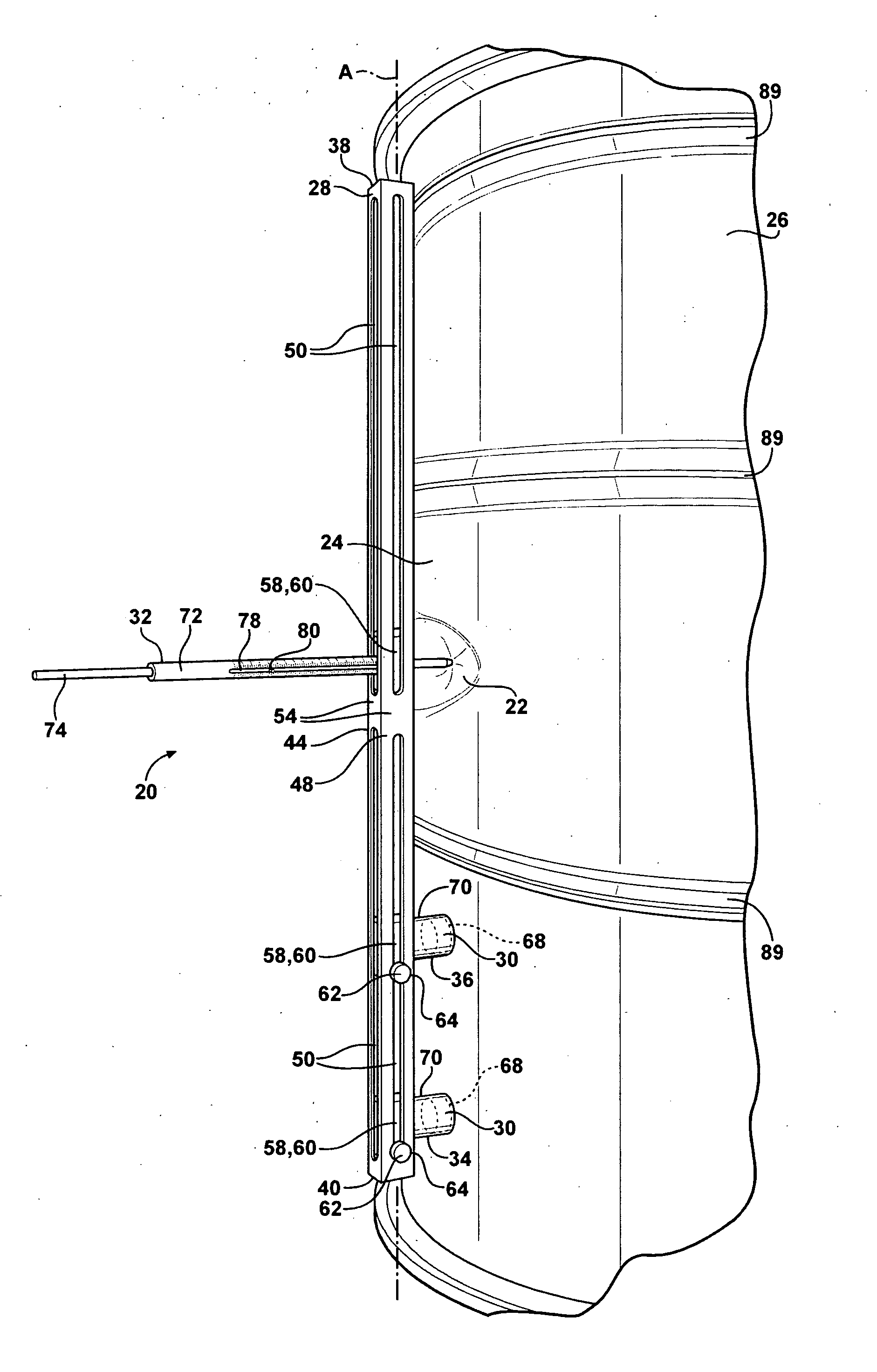Method Of Measuring Dents And Method Of Classifying Dents
a technology of dents and dents, applied in the direction of measuring tapes, mechanical measuring arrangements, instruments, etc., can solve the problems of contaminating the contents of shipping containers, contaminating the contents, and contaminating the contents, so as to reduce the cost, increase efficiency, and accurate and repeatability
- Summary
- Abstract
- Description
- Claims
- Application Information
AI Technical Summary
Benefits of technology
Problems solved by technology
Method used
Image
Examples
Embodiment Construction
[0022]Referring to the Figures, wherein like numerals indicate corresponding parts throughout the several views, the present invention includes a method of classifying a dent 22 on a surface 24 of a shipping container 26 as being in an acceptable or unacceptable classification. Selected steps of such a method are shown in FIG. 1. The method uses objective data and measurements such that the classification is consistent, i.e., accurate and repeatable. The method of classifying the dent 22 can be used to eliminate the necessity of opening the shipping container 26 to determine whether contents of the shipping container 26 are contaminated. The shipping container 26 is, for example, formed of metal and more specifically steel for transporting and storing chemicals. Alternatively, the shipping container 26 is formed of plastic. For example, the shipping container 26 may be any size such as, for example, the standard 20 liter shipping container or 200 liter shipping container. It should ...
PUM
 Login to View More
Login to View More Abstract
Description
Claims
Application Information
 Login to View More
Login to View More - R&D
- Intellectual Property
- Life Sciences
- Materials
- Tech Scout
- Unparalleled Data Quality
- Higher Quality Content
- 60% Fewer Hallucinations
Browse by: Latest US Patents, China's latest patents, Technical Efficacy Thesaurus, Application Domain, Technology Topic, Popular Technical Reports.
© 2025 PatSnap. All rights reserved.Legal|Privacy policy|Modern Slavery Act Transparency Statement|Sitemap|About US| Contact US: help@patsnap.com



